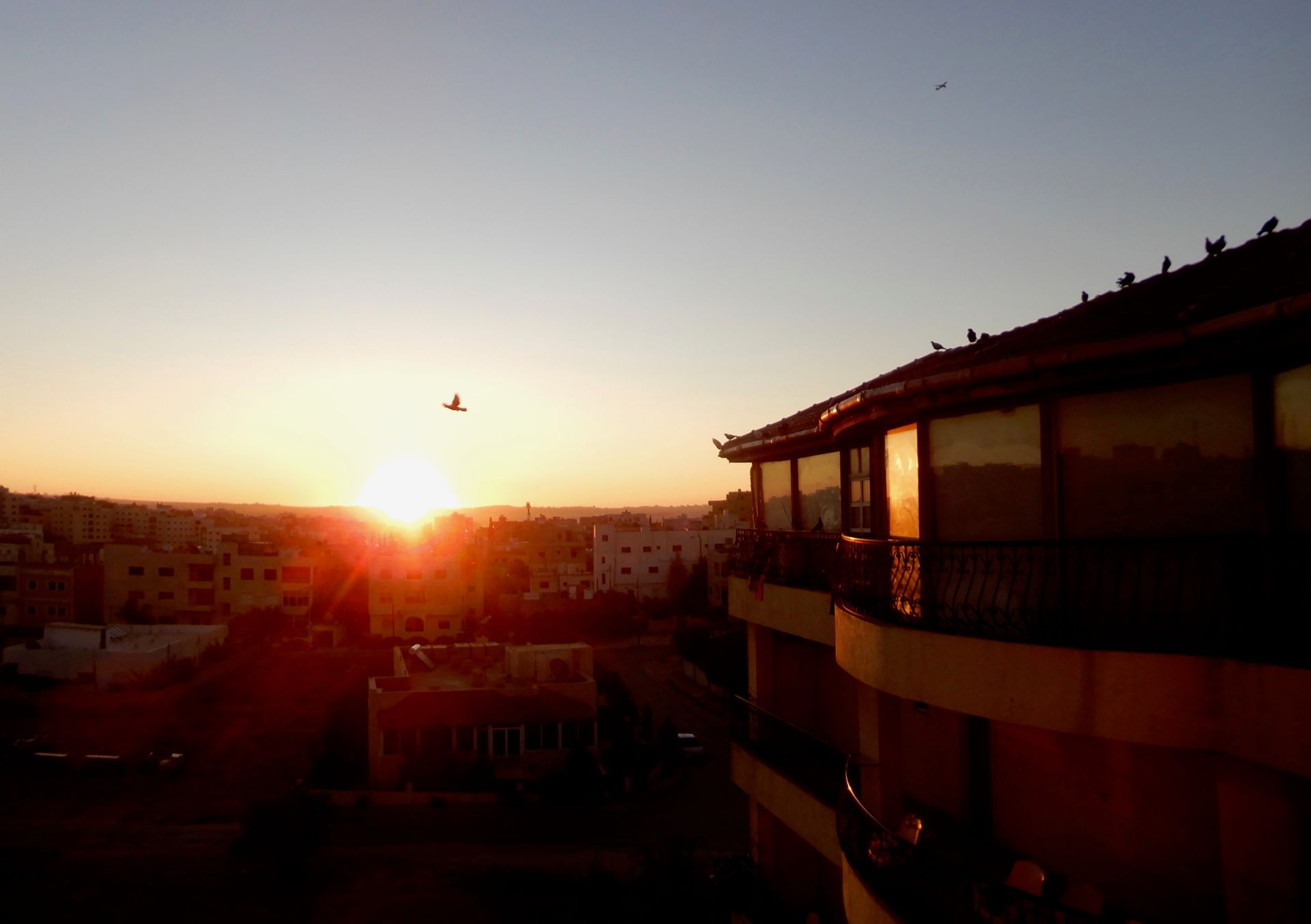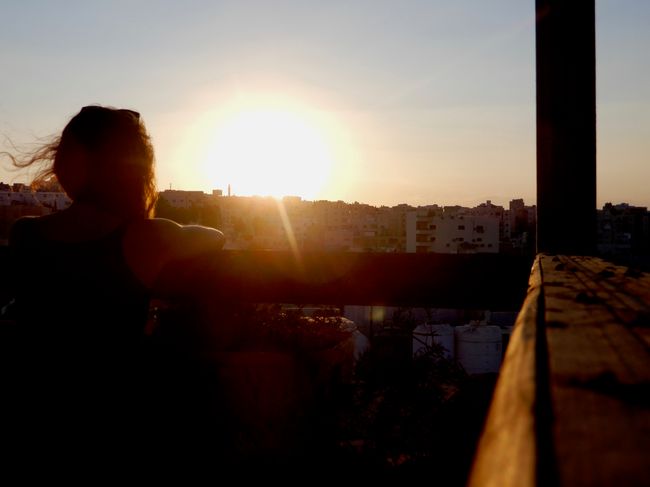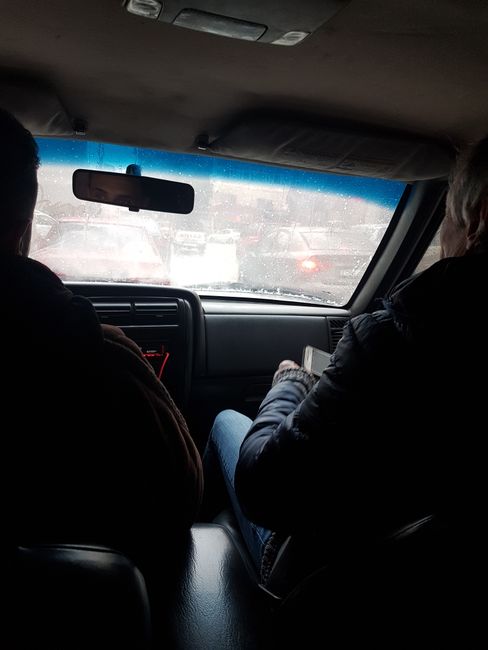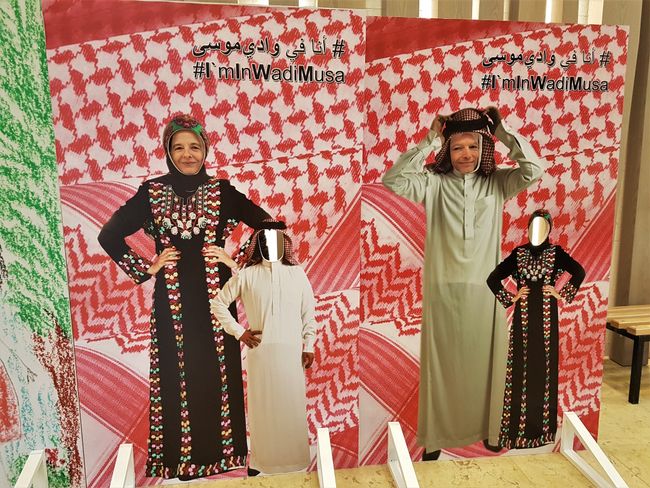Stuck in Petra
प्रकाशित: 30.01.2020
Tuesday, 21st January
8:30 am. It was cold last night. A look outside also shows nothing good. Gray, rainy, stormy. Actually, we thought about walking through Petra again today before taking the bus to Wadi Rum at 11:30, but with this weather it wouldn't be a good idea. So we sit down by the warm electric heater, make ourselves a tea and have some pastries for breakfast that we bought yesterday on the way home.
Muath eventually comes out of his room and joins us. He asks if we really want to go to Wadi Rum today. We do. He asks if we are sure that the bus will run in this weather. We are not. I message Nadjah, our contact person from Wadi Rum, who tells me that the weather in Wadi Rum is okay. While I quickly jump in the shower, Muath calls the bus driver and then delivers the news when I come out of the shower: Today there are no buses to Wadi Rum. The road there is too dangerous to drive due to heavy snowfall.
Damn. We actually wanted to be on a jeep tour through Wadi Rum this afternoon. However, a few pictures and videos that Muath shows us of the white, uncleared roads to Wadi Rum convince us that it won't be possible today. So what to do. Muath tells us that there is a good, new museum at the Petra Visitor Centre. Alright then. Museum day it is. It is hailing when Muath takes us down to the museum in his car. We are already freezing from the short walk from the parking lot to the museum entrance and realize that visiting the museum is probably the wisest thing to do today.
And the museum is really recommendable. Only opened last year, you learn everything about the history of Petra, which goes back to ancient times, in five modern rooms. We learn about the life of the Nabataeans, who were originally an Arab nomadic tribe, and then settled here in Wadi Musa and built Petra. In the middle of the desert, but still at a place where it was possible to collect and store water from various sources. It is truly impressive how they managed to survive in the desert back then with aqueducts, cisterns, and clay pipes. With their trade route and trade relations in all directions, they managed to live in prosperity for several centuries, until eventually the Romans came and put an end to the Nabataean Empire. It is worth mentioning, however, that the Nabataeans were also able to develop their culture for centuries because they allowed influences from all other cultures. Before they settled down and ultimately were annexed by the Romans, the secret to their long independence was also that they never owned land, and therefore never had anything that could be taken away from them. Both really inspiring and progressive approaches.
We actually spend the whole day at the museum - and when we leave the building at 6 o'clock, we haven't even seen all the information panels and film clips. Muath has written to me in the meantime: On the one hand, we will have company from two other travelers in his apartment tonight. On the other hand, he will bring us some food later. Apparently, there is still food left over from the funeral of his father two days ago. So we also get some sweets and then make our way back to the apartment.
There we meet Philipp from Germany and Juan from Mexico. The two of them study together in Tel Aviv and are now traveling in Jordan for a few days during their semester break. We join them in the sitting area when Muath arrives and brings a huge plate of rice with lamb. His cousin prepared 400 kg of lamb for the funeral, he tells us. I don't even want to know how many animals had to give their lives for that. But it tastes really excellent.
Muath calls the public bus and confirms that we can take it to Wadi Rum tomorrow morning at half past six before bidding us farewell. We spend the evening with the two guys who are really nice. I recommend them a few places in Amman because they will be there for the next few days. They will also be traveling in the West Bank in February. Who knows, maybe we'll meet again on the way. The world here is quite small, as I have noticed a few times before.
उत्तर



